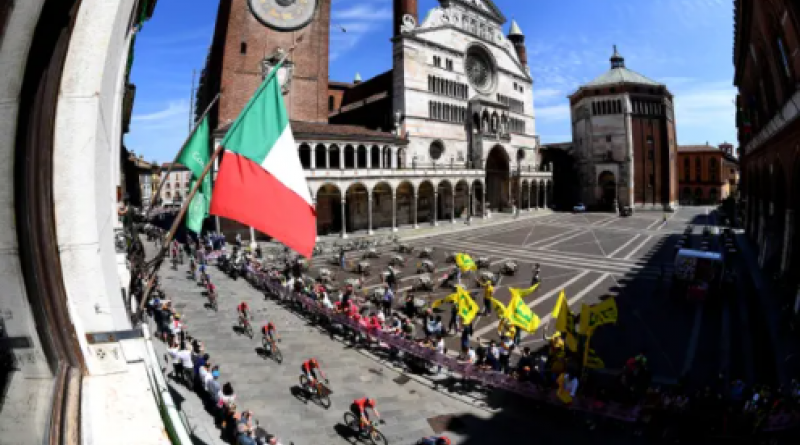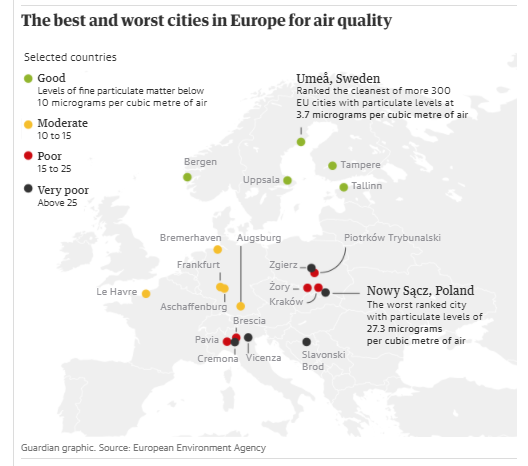More than half of Europe’s cities still plagued by dirty air, report finds

Data shows only 127 of 323 cities had acceptable PM 2.5 levels despite drop in emissions during lockdowns.
More than half of European cities are still plagued by dirty air, new data shows, despite a reduction in traffic emissions and other pollutants during last year’s lockdowns.
Cities in eastern Europe, where coal is still a major source of energy, fared worst of all, with Nowy Sącz in Poland having the most polluted air, followed by Cremona in Italy where industry and geography tend to concentrate air pollution, and Slavonski Brod in Croatia.
The three cleanest cities were Umeå in Sweden, Tampere in Finland and Funchal in Portugal.
The European Environment Agency (EEA) took data from 323 cities in 2019 and 2020 and found that in only 127 of these, or about 40%, levels of fine particulate matter known as PM 2.5 were below World Health Organization recommended limits. Fine particulate matter has the biggest health impact of the main sources of air pollution and causes more than 400,000 premature deaths a year across Europe.

The data showed the average over the two years and was only available for cities where consistent reporting was available, so not all European cities were covered. The UK was excluded, as the government has opted out of membership of the environmental watchdog, although other non-EU member states such as Turkey, Switzerland and Norway are members.
The EEA said that lockdown measures had led to large reductions in the levels of nitrogen dioxide, an irritant gas associated with emissions from diesel engines, but that levels of particulate matter had stayed high. Nitrogen dioxide levels fell by more than 60% in some cities in the lockdowns of April 2020, but decreases in levels of particulate matter were less dramatic, with falls of about 20% to 30% recorded in levels of large particulates (PM 10) last April.
The agency’s experts said this was because there were many more sources of particulate matter than just road traffic, including the combustion of fuel for heating, for instance in wood-fired boilers, and in industry, as well as from agriculture, as emissions of ammonia from fertiliser and animal manure combine with other pollutants in the atmosphere to form particulates.
Catherine Ganzleben, the EEA’s head of group on air pollution, environment and health, said changes in behaviour spurred by the Covid-19 pandemic could have an impact in future. “If people go back to the daily commute, or if they choose teleworking instead, that will disrupt these pollution patterns,” she said.
The new air pollution data will be available via a web viewer that will allow people to compare their cities with others across Europe.
Hans Bruyninckx, the executive director of the EEA, said: “While air quality has improved markedly over the past years, air pollution remains stubbornly high in many cities across Europe. This city air quality viewer allows citizens to see for themselves in an easy-to-use way how their city is doing compared to others on air pollution. It provides concrete and local information which can empower citizens towards their local authorities to address the issues.”




